
Bale Grist Mill State Historic Park is a California state park located in Napa County between St. Helena and Calistoga. The park is the site of a water-powered grist mill that was built in 1846 is one of only two water-driven mills remaining west of the Mississippi River.
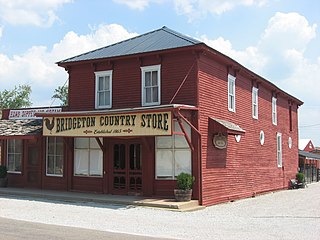
Bridgeton is an unincorporated community in Raccoon Township, Parke County, in the U.S. state of Indiana. It is notable for its covered bridge, which was destroyed on April 28, 2005, by a fire set by an arsonist. A historically accurate reconstruction of the bridge was completed in October, 2006.
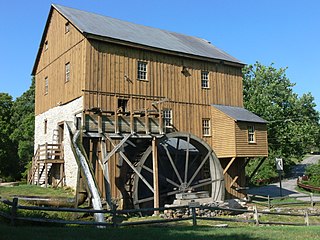
The Kennedy-Wade Mill, or Wade's Mill, is a grist mill and national historic district located in Raphine, Virginia and listed on the National Register of Historic Places. It was originally built c. 1750 by Captain Joseph Kennedy. In 1846 the mill was sold by the Kennedy family to Henry B. Jones, who expanded and improved the mill. After passing to other owners in 1867, the mill was damaged by fire in 1873. It was rebuilt and leased to James F. Wade, and put back into use in November 1882. The Wade family continued to operate it for four generations. It was bought in 1991 by Jim Young, and is still functioning today. The mill grinds flour using millstones and a 21-foot overshot water wheel. The flour is shipped to restaurants and livestock farmers.

The Tuthilltown Gristmill is located off Albany Post Road in Gardiner, New York, United States. It was built in 1788, as the National Register reports, and has been expanded several times since.
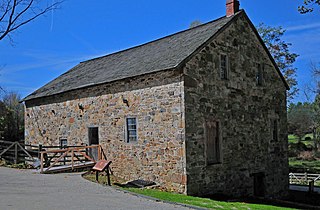
The Mill at Anselma is an archetypal small, 18th century custom grain mill in Anselma, outside Chester Springs, Pennsylvania. It is probably the only surviving one in the United States with an intact colonial-era power transmission system. A custom grain mill typically ground cornmeal and flour only for local farmers, not for commercial distribution. It was designated a National Historic Landmark in 2005.

Whitevale, formerly Majorville, is a community located within the City of Pickering in Durham Region, Ontario, Canada. The city refers to the community as the "Hamlet of Whitevale".

The Bauer Manor, also known as the Davenport House or Davenport Hotel, is a hotel located at 1280 U.S. Route 12 near the unincorporated community of Tipton in Franklin Township in northern Lenawee County, Michigan. It was designated as a Michigan State Historic State on May 18, 1971 and listed on the National Register of Historic Places on May 4, 2007.

Gaston's Mill-Lock No. 36, Sandy and Beaver Canal District, is a historic district listed in the National Register of Historic Places. The district is located within Beaver Creek State Park, approximately 1 mile south of Clarkson, Ohio. Gaston's Mill was constructed in 1837 and was powered by Little Beaver Creek. Lock 36 was one of 90 locks on the Sandy and Beaver Canal. Construction of this canal began in 1834 but was not completed until 1848.

The Wolcott Mill is a grist and feed mill located at 63841 Wolcott Road in Ray Township, Michigan. It was listed on the National Register of Historic Places in 2009.

The Guenther House is a restaurant, museum and store located at 205 E. Guenther Street in the King William neighborhood of the Bexar County city of San Antonio in the U.S. state of Texas. Currently operated by C. H. Guenther and Son. Inc., the home was originally built as a private residence in 1859 by Pioneer Flour Mills founder Carl Hilmar Guenther. It was listed on the National Register of Historic Places listings in Bexar County, Texas on October 11, 1990.

The Grafton Flour Mill is a former grist mill on the Milwaukee River in Grafton, Wisconsin, United States. The original section was built in 1846 by a group of Yankee farmers as a flour mill and produced flour for many years through a succession of owners.
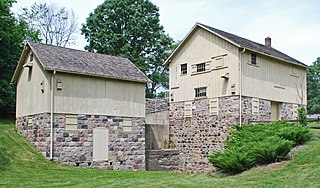
The Parker Mill, also known as Parker Mill Park or Parker Mill Complex, is a mill located at 4650 Geddes Road, east of Ann Arbor, Michigan. The mill is a well-preserved example of a small-scale grist mill operation that was once common in Michigan. The mill and nearby Parker House were listed on the National Register of Historic Places in 1982.

Meek's Flour Mill is a historic building located in Bonaparte, Iowa, United States. William Meek and Dr. R.N. Cresap laid out the town of Meek's Mill in 1837. Although the town was renamed Bonaparte in 1841, the Meek family had a central role in its development through the turn of the 20th-century. The present building is a three-story, gable roofed, rectangular structure that was built on a raised basement of ashlar limestone blocks. It was constructed in 1878 by William's son Robert, who had succeeded his father in running the family businesses. He was assisted by his brothers Isaiah and Joseph. It replaced the original 1844 mill, which had been destroyed in a fire. While built on the same site, it is unknown if any part of the present structure was a part of the original mill. Two other structures belonging to the Meek's family are located nearby: a woolen mill (1853), and a saw mill (1860).
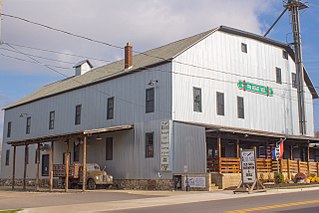
The J. F. Eesley Milling Co. Flour Mill–Elevator was built as a flour mill located at 717 East Bridge Street in Plainwell, Michigan. The building has been renovated and houses a brewpub. It was listed on the National Register of Historic Places in 1991.

The W. R. Stafford Flour Mill and Elevator was a mill located at 4310 Huron Street in Port Hope, Michigan. It was listed on the National Register of Historic Places in 1987 and demolished in the early 2000s.

The Huron City Historic District is a historic district encompassing the village of Huron City, Michigan, with structures located primarily along Pioneer Drive. The district was listed on the National Register of Historic Places in 1995.

The Bellevue Gothic Mill is a historic gristmill located on the west bank of Battle Creek, at 218 East Mill Street in Bellevue, Michigan. It was a producing grist mill from 1854 until 1958. It was listed on the National Register of Historic Places in 1975. In 1977 The Stockhausen family purchased the property and began to restore the building. In 1982 The Bellevue Mill housed Michiana Hydroelectric and produce 45kW. A Michigan Historic marker was erected in 2016.
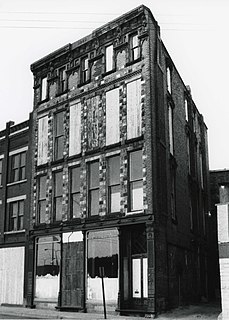
The Adam C. Arnold Block was a commercial building located at 12-14 East State Street in Battle Creek, Michigan. It was listed on the National Register of Historic Places in 1983. It was demolished in 1988.

The Homer Village Historic District is a commercial and residential historic district roughly bounded by Leigh, Burgess, Hamilton, School, and Byron Streets in Homer, Michigan. It was listed on the National Register of Historic Places in 1996.






















